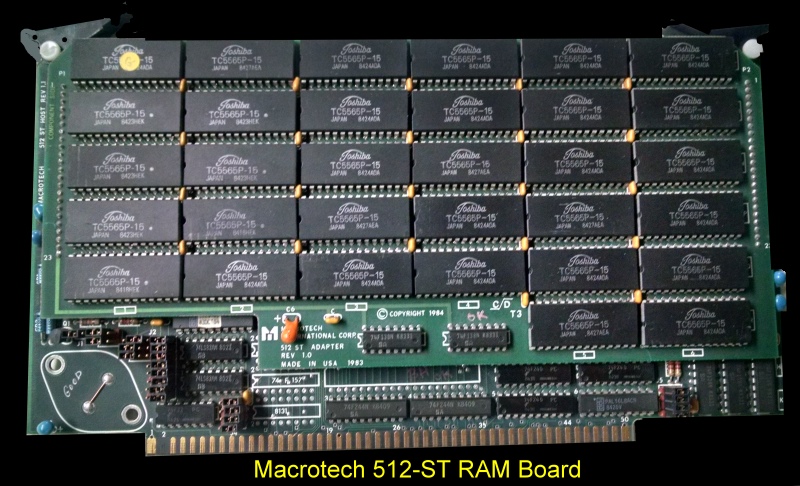

| Home | S-100 Boards | History | New Boards | Software | Boards For Sale |
| Forum | Other Web Sites | News | Index |

The 512-ST has three basic functional addressing modes. All modes were designed to provide the required 24-bit physical array address. At any moment in time, one of the three addressing modes was in operation. The three functional addressing modes were:
1. 24-bit (extended) mode -Where the physical address is equal to the 24-bit logical address. (PA23-PA00 = LA23-LA00) .
2. 16-bit (standard) pass mode -A sub mode of map mode addressing. Invoked at power-up or reset to provide 64k of memory to the system for initialization. Pass mode automatically maps the lower 64k of the selected board to be active in this mode. In the selected 512-ST, the upper eight bits (PA23-PA16) of the generated physical address are forced to logical zeroes and the remaining sixteen physical address bits (PA15-PA00) are passed directly from the logical address bus (LA15-LA00) when address is involed.
3. 16-bit (standard) map mode -In map mode addressing, the upper twelve physical address bits (PA23-PA12) are generated by the map register outputs (MO23-MO12) , and the lower twelve physical address bits (PAll-PA00) are passed to the memory array directly from the logical address bus (LAll-LA00). Note that the term "Standard" in this context refers to the IEEE/696 definition of a l6-bit. address bus, and that mapped (M3) addresslng is actually an optlonal feature of the 512-ST.
The manual for this board cam be obtained here.
128K RAM 256K RAM 512-ST RAM 1MG RAM 2MG RAM V-RAM 80286 ADIT 80386
This page was last modified on 05/11/2020